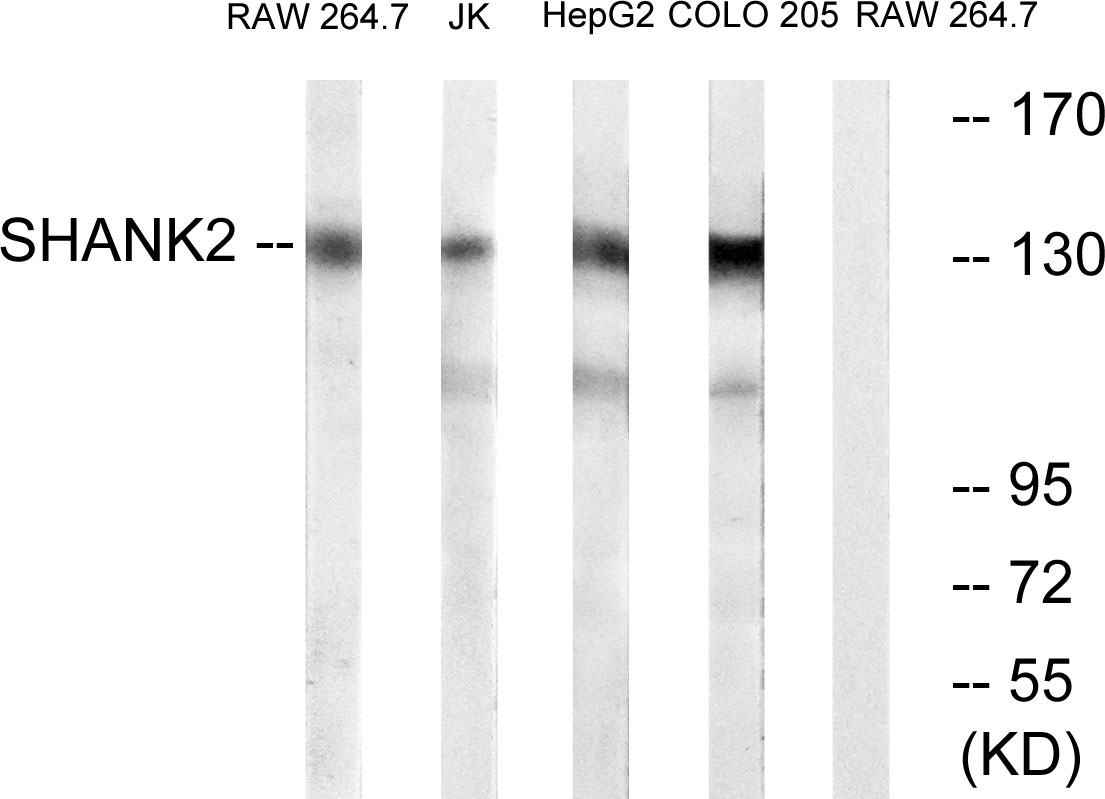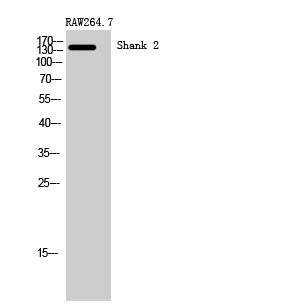
WB analysis of Jurkat (A), IMR32 (B) whole cell lysates using GTX56184 SHANK2 antibody.
SHANK2 antibody
GTX56184
ApplicationsWestern Blot
Product group Antibodies
TargetSHANK2
Overview
- SupplierGeneTex
- Product NameSHANK2 antibody
- Delivery Days Customer9
- Application Supplier NoteWB: 1:500 - 1:1000. *Optimal dilutions/concentrations should be determined by the researcher.Not tested in other applications.
- ApplicationsWestern Blot
- CertificationResearch Use Only
- ClonalityPolyclonal
- ConjugateUnconjugated
- Gene ID22941
- Target nameSHANK2
- Target descriptionSH3 and multiple ankyrin repeat domains 2
- Target synonymsAUTS17, CORTBP1, CTTNBP1, ProSAP1, SHANK, SPANK-3, SH3 and multiple ankyrin repeat domains protein 2, GKAP/SAPAP interacting protein, cortactin SH3 domain-binding protein, cortactin-binding protein 1, proline-rich synapse associated protein 1
- HostRabbit
- IsotypeIgG
- Protein IDQ9UPX8
- Protein NameSH3 and multiple ankyrin repeat domains protein 2
- Scientific DescriptionThis gene encodes a protein that is a member of the Shank family of synaptic proteins that may function as molecular scaffolds in the postsynaptic density of excitatory synapses. Shank proteins contain multiple domains for protein-protein interaction, including ankyrin repeats, and an SH3 domain. This particular family member contains a PDZ domain, a consensus sequence for cortactin SH3 domain-binding peptides and a sterile alpha motif. The alternative splicing demonstrated in Shank genes has been suggested as a mechanism for regulating the molecular structure of Shank and the spectrum of Shank-interacting proteins in the postsynaptic densities of the adult and developing brain. Alterations in the encoded protein may be associated with susceptibility to autism spectrum disorder. Alternative splicing results in multiple transcript variants. [provided by RefSeq, Feb 2014]
- Storage Instruction-20°C or -80°C,2°C to 8°C
- UNSPSC12352203





